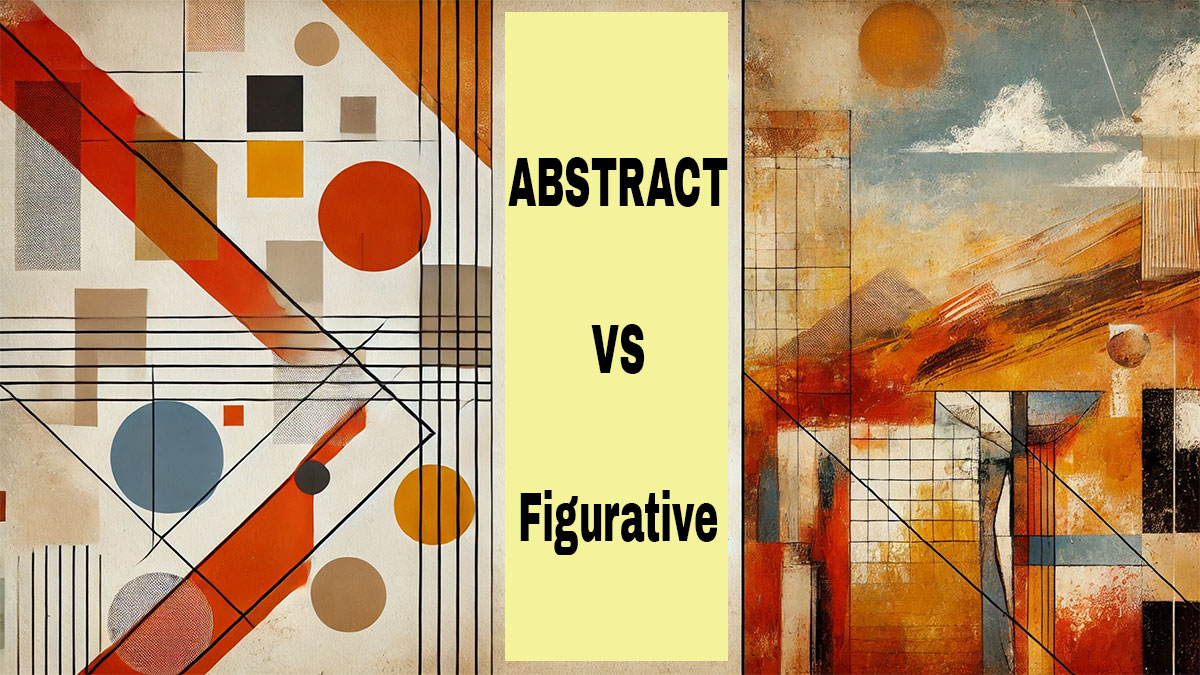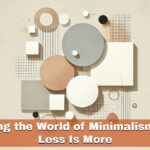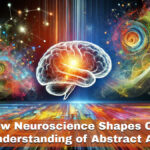Abstract vs. Figurative: The Eternal Debate in Art
The art world has long been divided into abstract and figurative styles. This debate has fueled conversations among artists, critics, and art enthusiasts for decades if not centuries. Both styles represent unique approaches to artistic expression, each with its philosophy, techniques, and impact. But what truly differentiates these two styles, and why do artists often find themselves drawn to one over the other? Let’s dive into the fascinating world of abstract and figurative art to uncover their contrasts, connections, and enduring relevance.
Understanding Figurative Art
What is Figurative Art?
Figurative art refers to works that represent real-world objects, people, or scenes. It aims to mirror reality, often emphasizing storytelling, emotion, or symbolic meaning. From the classical realism of the Renaissance to the impressionistic renderings of the 19th century, figurative art has been the cornerstone of artistic traditions across cultures.
Key Characteristics of Figurative Art:
- Representation: Focused on recognizable subjects, whether human figures, landscapes, or still life.
- Detail and Realism: Often rooted in technical skill, capturing intricate details and lifelike depictions.
- Narrative: Tends to convey a story, theme, or concept that resonates with viewers.
Famous Examples of Figurative Art
- Leonardo da Vinci’s Mona Lisa: A masterpiece of portraiture, celebrated for its realism and emotional depth.
- Vincent van Gogh’s Starry Night: While stylistically unique, it still portrays a real landscape with imaginative flair.
- Frida Kahlo’s Self-Portraits: Highly personal works that intertwine realism with surreal symbolism.
Figurative art appeals to those who appreciate visual storytelling and the beauty of the tangible world. It bridges the artist’s vision and the viewer’s reality, often evoking deep emotional connections.
Exploring Abstract Art
What is Abstract Art?
Abstract art, on the other hand, breaks free from literal representation. It focuses on shapes, colors, and forms to evoke feelings, ideas, or states of mind. This style invites viewers to interpret the artwork subjectively, finding their meanings within abstraction’s chaos—or harmony.
Key Characteristics of Abstract Art:
- Non-Representation: Does not aim to depict real-world objects or scenes.
- Emotion and Concept: Centers on evoking emotions or ideas rather than recreating reality.
- Experimentation: Often employs unconventional techniques and mediums.
Famous Examples of Abstract Art
- Wassily Kandinsky’s Composition VII: A symphony of color and form believed to be one of the first true abstract works.
- Piet Mondrian’s Composition with Red, Blue, and Yellow: A minimalist exploration of geometry and primary colors.
- Jackson Pollock’s Drip Paintings: Dynamic, chaotic works that capture movement and energy.
Abstract art resonates with those who seek freedom in interpretation and the joy of exploring uncharted creative territories. It challenges traditional notions of beauty and compels viewers to engage with art on a deeply personal level.
The Divergence of Styles: Why Artists Choose One over the Other
Artists often gravitate toward abstract or figurative art based on their personality, goals, and artistic philosophy. Here’s why:
Figurative Artists: Rooted in Reality
- Connection to Storytelling: Many artists feel compelled to share their experiences or observations of the world. Figurative art allows them to do so clearly and relatably.
- Mastery of Technique: For some, the challenge lies in perfecting their craft—whether rendering the human form or capturing the nuances of light and shadow.
- Cultural or Historical Influences: Traditional artistic training often emphasizes realism, which can deeply influence an artist’s style.
Case Study: Frida Kahlo
Kahlo’s deeply autobiographical works are a testament to the power of figurative art. Through her self-portraits, she expressed pain, love, and resilience, connecting with viewers on a profoundly human level.
Abstract Artists: Embracing Freedom
- Rejection of Conventions: Abstract artists often challenge societal norms, breaking free from the confines of representation to explore new dimensions of creativity.
- Focus on Emotion and Intuition: Many abstract artists prioritize the process over the product, using their work to channel emotions or subconscious thoughts.
- Modern and Contemporary Appeal: Abstract art aligns with the fast-paced, ever-changing nature of the modern world, appealing to artists who value innovation.
Case Study: Jackson Pollock
Pollock’s action painting technique revolutionized the art world. By dripping and splattering paint on large canvases, he created works that captured energy and spontaneity, embodying the essence of abstraction.
The Blurring Lines: Can Abstract and Figurative Coexist?
Interestingly, the boundary between abstract and figurative art is not always clear-cut. Many artists incorporate elements of both styles, creating works that challenge traditional classifications.
Examples of Blended Styles:
- Pablo Picasso’s Cubism: Picasso’s works, such as Les Demoiselles d’Avignon, blur the line between abstraction and figuration by deconstructing forms into geometric shapes.
- Mark Rothko’s Color Fields: While abstract, Rothko’s paintings evoke a sense of place or atmosphere, bridging the gap between the real and the imagined.
This intersection of styles demonstrates that art is not about rigid categories but about creative expression that evolves with time and context.
The Viewer’s Perspective: Abstract vs. Figurative
The eternal debate between abstract and figurative art concerns not just artists but also the audience. Some viewers are drawn to the familiarity and clarity of figurative works, while others enjoy the interpretative freedom of abstraction. Ultimately, art appreciation is subjective and deeply personal.
Conclusion: The Beauty of Coexistence
The debate between abstract and figurative art is not a matter of superiority but of diversity. Both styles offer unique ways of seeing, feeling, and expressing. Figurative art grounds us in the tangible, connecting us to stories and realities. Abstract art, on the other hand, liberates us from convention, encouraging exploration and introspection.
As an artist myself, I find value in both styles. There are days when I revel in the precision of figurative drawing, capturing the subtleties of a human expression. Other times, I lose myself in the fluid chaos of abstraction, letting emotions guide my hand. Each approach fulfills a different aspect of my creative journey, and I believe this duality makes art so enriching.
So, whether you’re a fan of the lifelike beauty of figurative art or the enigmatic allure of abstraction, remember that art reflects the infinite ways we perceive the world—and ourselves. The debate may be eternal, but this very tension keeps the art world alive and evolving.
References:
- Kandinsky, W. (1913). Composition VII.
- Picasso, P. (1907). Les Demoiselles d’Avignon.
- Pollock, J. (1950). Number 1 (Lavender Mist).
- Da Vinci, L. (1503). Mona Lisa.
- Kahlo, F. (1939). The Two Fridas.
This endless dialogue between abstract and figurative art continues to inspire, provoke, and challenge. After all, isn’t that the ultimate goal of art?



